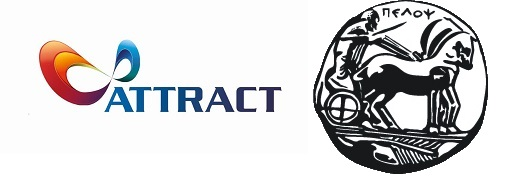Speaker
Description
In future detector systems for particle physics and photon science the ever-increasing number of electronic channels results in a keen demand for data read-out capacity. The data transmission from the detector front-end to the counting room relies more and more on optical links. In state-of-the art solutions, individual optical fibers connect directly modulated laser diodes to a corresponding receiver in the periphery of the detector.
Recently, we proposed an optical data transmission system based on wavelength division multiplexing (WDM) [1, 2], where a single optical fiber transports numerous optical channels, which may provide a generous data rate up to the Tbit/s range. That would increase the data readout capacity significantly while reducing the number of individual fibers connecting read-out chips with the data acquisition units. Laser sources providing the optical carriers would be located off-detector thus not contributing to the energy budget within the detector volume. WDM systems are well-known in telecommunications for long-haul networks but are entirely new to high energy physics experiments. The achievable bandwidth together with low mass and power consumption would revolutionize data transmission, data acquisition, and trigger architectures.
The essential building block of our proposed system is the monolithically integrated multi-wavelength transmitter on a silicon-on-insulator (SOI) platform. An optical demultiplexer separates incident optical carriers in order to forward each of them to an electro-optic modulator to encode electrical information. A multiplexer merges all data-carrying signals to be transported over a single optical fiber. The (de-)multiplexers would be implemented as planar concave gratings (PCG), the electro-optic modulators as Mach-Zehnder interferometers consisting of two identical pn phase-modulators.
For a first conservative demonstrator, we aim for a data rate of 10 Gbit/s per modulator to keep costs and complexity for the driver circuity low. The integrated transmitter would encode data on four WDM-channels, which results in a data rate of 40 Gbit/s per fiber. The per-channel data rate can be increased to 32 Gbit/s by using the full speed of the driver chip and carefully optimized circuitry, adding up to 128 Gbit/s per fiber. Future versions of the optical link could operate 16 to 64 wavelength channels, making a total transmission bandwidth up to the Tbit/s range feasible.
We present our current work on photonic chip design and prototypes, driver design, simulations, and packaging, as well as challenges to enable the system to work at extreme radiation levels.
[1] P. Skwierawski et al., 2016, JINST 11 C01045
[2] D. Karnick et al., 2017, JINST 12 C03078




